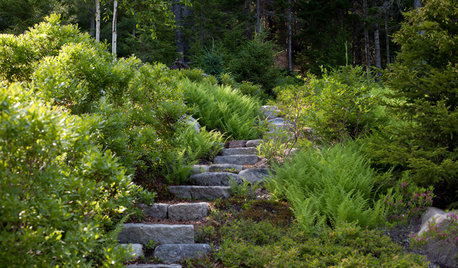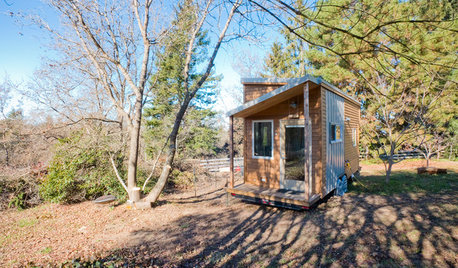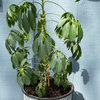Fertilizer Program for Containerized Plants III
tapla (mid-Michigan, USDA z5b-6a)
12 years ago
Featured Answer
Comments (150)
Bob1016
12 years agolast modified: 9 years agojdwhitaker
12 years agolast modified: 9 years agoRelated Discussions
Container growing in Mexico
Comments (8)Hi Bryan, I actually took my honeymoon in Puerto Vallarta! We stayed at the Grand Velas. Absolutely unreal! While we were there we made a trip up to the Vallarta Botanical Gardens. They may be a very good starting point to find locally available resources. There website is: http://www.vbgardens.org/ For the 5-1-1 you are going to want to try to find pine or fir bark to start with, you can use the dust (less than 1/16") from that as your peat fraction if you wish. For the other part you will need to locate some perlite. You will also need dolomitic lime and of course some fertilizer. If those products are not locally available, the internet is your best bet. You should also really read Al's threads in thier entirity. I don't know how to post the link but just find: "Container Soils - Water Movement & Retention XV" (this thread is on the first page right now) "Fertilizer Program for Containerized Plants III" (this thread is on the second page right now) Those two threads will get you moving in the right direction. Good Luck! PJ...See MoreFertilizer Program - Containerized Plants (Long Post)
Comments (126)"It looks like you switched to the Dyna grow 9-3-6 last year. Do you still use CRF in your soil mix if you are still using this fert?" Actually, I rarely use the CRFs at all. I like the near complete control the soluble fertilizers give me in containers. I'm pretty diligent about fertilizer applications, so I really don't need the CRFs to cover the 'in case I forget' base, or for any minor elements they might supply. I included them in the soil recipes to make it easier for others. As long as you're faithful to your nutrient supplementation program, you can easily do w.o them. If you think you'll be lax at times, I'd include them. 109 ppm alkalinity is nothing to be overly concerned about with fast container soils. It would be interesting to learn how the Ca and Mg levels are though. Alkalinity is related to pH because alkalinity (practically speaking and for our applications) determines your water's resistance to pH changes. If you have water 'A' at a pH of 9.0 with an alkalinity of 75 mg/L CaCO3, and water 'B', with a pH of 8.0 (a full point lower to begin with) and alkalinity of 300 mg/L CaCO3, it will take about 4 times as much 35% H2SO4 (sulfuric acid) to bring the water with the lower pH down to That aside - your water is better than mine, so I really doubt you'll have Fe/Mn issues if you're using either the 9-3-6 or MG. I will say though, that bark/peat soils have a potentially high Fe:Mn ratio, so applying Fe w/o Mn could easily create a deficiency of Mn. If I were in your shoes, I would do nothing until I actually saw evidence of an Fe deficiency. Then, I would acidify. Oh - the other likely cause of an Fe deficiency is too much P, which combines with the Fe to form an insoluble precipitate, so avoid the high P fertilizers - they are useless unless you are using them to supply the exact amount of P needed while intentionally (severely) limiting N. I used this strategy last year: I fertilized with regular dosages of 9-3-6 until the plants were well established. I then cut way back on the dosage and added ProTeKt to the solution. I rather like to envision that I used the added K (and got the benefit of the added silicon) to change the fertilizer ratio to 3:1:3 from a 3:1:2. This allowed me to reduce the dosage of N (reducing vegetative growth) while still having adequate P and K. Take care. Al...See MoreSoilless Mix - How does it work?
Comments (7)Here's a wealth of material regarding the use of fertilizers for potted plants. Note there are links in this thread to earlier discussions on the same topic. My jade plants are pretty young - all but 2 were started from cuttings this past spring. I've been using Foliage-Pro mixed at 1/8 tsp per gal for each watering. This is working for my plants in my conditions at this time. You'll probably get as many different recommendations as people that you ask... I trust you'll find the link below to be informative. -Tim Here is a link that might be useful: Fertilizer Program for Containerized Plants III...See MoreFertilizing Containerized Trees
Comments (4)Hi, Al. I see this is an old post, but I'm hoping you get to see this comment because, well, I'm in NZ, and some things (like liquid fertilisers) just aren't as cheap here as they are in the States, and I'm wanting to come up with a cheap way to feed my containers (and mostly because I am endowed with the blood of Scotsmen.....extra-cheap Scotsmen at that!). :) Soooooooo, here are my thoughts. In NZ, we have grass.....like, LOTS of grass....enough grass to feed about 30 million hungry sheep! My lawn has got to be more useful than just to provide my weekly exercise cutting the darn thing. I was browsing around the net and found an interesting article on grass tea as fertiliser. To cut a long article short, the science behind this 'tea' said the NKP turned out to be about 1-.5-3.1. I'm no maths professor (so correct me if I'm wrong), but I figured the ratio of this to be 2:1:6.2. Right? Anyway, I know this is a little off your recommended ratio of 3:1:, so I'm just wondering if I can add a little (cheap) something to improve the ratio, or is this a pipe dream? I can get the STEM quite cheaply (because it goes a long way). So, what do you think? If you have the time to indulge me, I'd appreciate your advice. Thanks. :) Michaela...See MoreTheMasterGardener1
12 years agolast modified: 9 years agotapla (mid-Michigan, USDA z5b-6a)
12 years agolast modified: 9 years agoBob1016
12 years agolast modified: 9 years agoTheMasterGardener1
12 years agolast modified: 9 years agoTheMasterGardener1
12 years agolast modified: 9 years agoBob1016
12 years agolast modified: 9 years agoTheMasterGardener1
12 years agolast modified: 9 years agoBob1016
12 years agolast modified: 9 years agocapoman
12 years agolast modified: 9 years agoTheMasterGardener1
12 years agolast modified: 9 years agotapla (mid-Michigan, USDA z5b-6a)
12 years agolast modified: 9 years agoTheMasterGardener1
12 years agolast modified: 9 years agooctoberust
12 years agolast modified: 9 years agooctoberust
12 years agolast modified: 9 years agoTheMasterGardener1
12 years agolast modified: 9 years agooctoberust
12 years agolast modified: 9 years agotapla (mid-Michigan, USDA z5b-6a)
12 years agolast modified: 9 years agooctoberust
12 years agolast modified: 9 years agotapla (mid-Michigan, USDA z5b-6a)
12 years agolast modified: 9 years agooctoberust
12 years agolast modified: 9 years agooctoberust
12 years agolast modified: 9 years agotapla (mid-Michigan, USDA z5b-6a)
12 years agolast modified: 9 years agoweirdflowers
12 years agolast modified: 9 years agoBob1016
12 years agolast modified: 9 years agotapla (mid-Michigan, USDA z5b-6a)
12 years agolast modified: 9 years agoweirdflowers
12 years agolast modified: 9 years agoDaMonkey007
12 years agolast modified: 9 years agoTheMasterGardener1
12 years agolast modified: 9 years agokatorahble
12 years agolast modified: 9 years agotapla (mid-Michigan, USDA z5b-6a)
12 years agolast modified: 9 years agopaul61nakz4
12 years agolast modified: 9 years agofortyonenorth
12 years agolast modified: 9 years agotapla (mid-Michigan, USDA z5b-6a)
12 years agolast modified: 9 years agoTheMasterGardener1
12 years agolast modified: 9 years agobronxfigs: New York City/7b
12 years agolast modified: 9 years agotapla (mid-Michigan, USDA z5b-6a)
12 years agolast modified: 9 years agotapla (mid-Michigan, USDA z5b-6a)
12 years agolast modified: 9 years agogreenman28 NorCal 7b/8a
12 years agolast modified: 9 years agoTheMasterGardener1
12 years agolast modified: 9 years agotapla (mid-Michigan, USDA z5b-6a)
12 years agolast modified: 9 years agogreenman28 NorCal 7b/8a
12 years agolast modified: 9 years agoLoveplants2 8b Virginia Beach, Virginia
12 years agolast modified: 9 years agogreenman28 NorCal 7b/8a
12 years agolast modified: 9 years agoLoveplants2 8b Virginia Beach, Virginia
12 years agolast modified: 9 years agomaple_grove_gw
12 years agolast modified: 9 years agotapla (mid-Michigan, USDA z5b-6a)
12 years agolast modified: 9 years agotapla (mid-Michigan, USDA z5b-6a)
12 years agolast modified: 9 years agotapla (mid-Michigan, USDA z5b-6a)
12 years agolast modified: 9 years ago
Related Stories

GARDENING GUIDESGreat Design Plant: Grow Blueberries for Their Fruit and More
Eastern gardeners should consider growing blueberry plants for their delicious fruits, bee-friendly spring blooms and brilliant fall foliage
Full Story
SMALL HOMESHouzz Tour: Rolling With Simplicity in a Tiny House on Wheels
Just 240 square feet, this California home encourages efficient living — but there’s still room for yoga
Full Story





tapla (mid-Michigan, USDA z5b-6a)Original Author